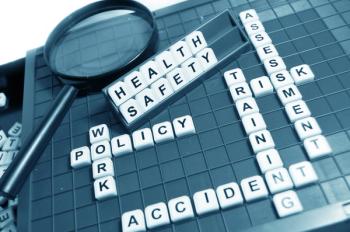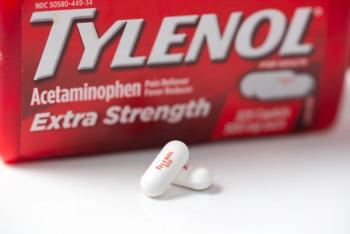
- February 2020
- Volume 87
- Issue 2
Antipsychotics for Children With ADHD Should Be a Last Resort
Careful treatment selection can prevent lifelong and serious complications from these medications.
In the past decade, physicians have been more likely to prescribe antipsychotic medications to children, and especially adolescents, than ever before.1 Between 1999 and 2014, antipsychotic prescribing for young people in the United States increased by 50%. More than 1 million American youths take antipsychotic drugs.1 The FDA has approved some antipsychotic medications for a narrowly defined set of psychiatric disorders in children (table 1).2-7
A growing concern is that prescribers may be using such drugs for nonpsychotic conditions in which experts and guidelines recommend psychosocial interventions as first-line treatment. These conditions include disruptive behaviors and attention-deficit hyperactivity disorder (ADHD), with the latter accounting for about half of all antipsychotic drug use in children.1,8-11 This is not a new concern. More than 10 years ago, the Agency for Healthcare Research and Quality raised concerns and recommended that organizations monitor antipsychotic medication use in children.12 The Healthcare Effectiveness Data and Information Set has included a measure for this perceived problem since 2015.
A primary concern is the potential for significant adverse effects (AEs) in children who experience long-term exposure to these drugs. Pharmacists are well aware of antipsychotics’ adverse metabolic effects (ie, hyperlipidemia, hyperprolactinemia, increased risk of type 2 diabetes, and weight gain).13,14 These conditions have lifelong implications. Other serious risks include cardiac arrhythmias, extrapyramidal AEs, liver toxicity, sedation, and somnolence.2-7 Aripiprazole and quetiapine carry a boxed warning indicating that in adolescents, children, and young adults who take antidepressants for major depressive disorder and other psychiatric disorders, risk of suicidal behavior and thinking is elevated. (Note that although aripiprazole and quetiapine are not FDA approved for depressive episodes in bipolar I disorder or as adjunctive treatment for major depressive disorder in pediatric patients, they carry this warning.3,5) A recent study found that using antipsychotic doses higher than 50-mg chlorpromazine equivalents was associated with an increased risk of unexpected death 3.5-fold higher than in children treated with lower doses or those who did not receive an antipsychotic. Thus, the concern is evidence based.15
ANTIPSYCHOTICS: NOT FIRST LINE
A freestanding diagnosis of ADHD is not an indication for antipsychotic medications. Although no studies have determined which children who get an ADHD diagnosis are most likely to receive antipsychotic medications, mental health comorbidity is a possible factor.
ADHD often occurs in conjunction with other mental health conditions. Common comorbidities include conduct disorder (depression, or oppositional defiant disorder),16 and prescribers may use antipsychotic drugs to augment other approaches. The evidence does not support using antipsychotic medication for depression in youths, but some data support a risperidone trial for conduct disorder or oppositional defiant disorder in stimulant-resistant youths with ADHD.16-24
A second concern is aggression. Aggression that stems from poor impulse control is common in youths who have ADHD,25 and it frequently occurs in children who have comorbidities. This behavior is often associated with a need for assessment, hospitalization, or urgent care and requires careful follow-up and cautious risk assessment.26 ADHD may not respond to stimulant medications, so prescribers may use antipsychotic drugs off-label in an effort to reduce aggressive outbursts.27,28 Research shows that antipsychotic-treated youths with ADHD often have clinical characteristics associated with aggression. However, few youths with ADHD who were treated with antipsychotics received the evidence-indicated trial doses of 2 stimulants before an antipsychotic.25
ALTERNATIVES TO ANTIPSYCHOTIC DRUGS
Pharmacists can monitor antipsychotic drug prescribing and make a valuable recommendation to the pediatric treatment team. Table 2 lists some guidelines.15,29,30
CONCLUSION
ADHD can be challenging for health care providers and parents and often has difficult-to-treat comorbidities. Careful selection of treatments can prevent lifelong and serious complications.
Jeannette Y. Wick, MBA, RPh, FASCP, is the assistant director of the Office of Pharmacy Professional Development at the University of Connecticut School of Pharmacy in Storrs.
REFERENCES
- Olfson M, King M, Schoenbaum M. Treatment of young people with antipsychotic medications in the United States. JAMA Psychiatry. 2015;72(9):867-874. doi:10.1001/jamapsychiatry.2015.0500.
- Zyprexa Relprevv (olanzapine) [prescribing information]. Indianapolis, IN: Lilly USA, LLC; 2009. pi.lilly.com/us/zyprexa_relprevv.pdf. Accessed January 22, 2020.
- Abilify (aripiprazole) [prescribing information]. Rockville, MD: Otsuka America Pharmaceutical, Inc; 2014. https://www.accessdata.fda.gov/drugsatfda_docs/label/2014/021436s038,021713s030,021729s022,021866s023lbl.pdf. Accessed January 22, 2020.
- Invega (paliperidone palmitate) [prescribing information]. Titusville, NJ: Janssen Pharmaceuticals, Inc; 2018. https://www.janssenlabels.com/package-insert/product-monograph/prescribing-information/INVEGA-pi.pdf. Accessed January 22, 2007.
- Seroquel (quetiapine) [prescribing information]. Wilmington, DE: AstraZeneca Pharmaceuticals LP; 2012. https://www.accessdata.fda.gov/drugsatfda_docs/label/2016/020639s064lbl.pdf. Accessed January 22, 2020.
- Risperdal (risperidone) [prescribing information]. Titusville, NJ: Janssen Pharmaceuticals, Inc; 2009. https://www.accessdata.fda.gov/drugsatfda_docs/label/2009/020272s056,020588s044,021346s033,021444s03lbl.pdf. Accessed January 22, 2020.
- Saphis (asenapine) [prescribing information]. Whitehouse Station, NJ: Merck & Co Inc; 2009. https://www.accessdata.fda.gov/drugsatfda_docs/label/2010/022117s003s004lbl.pdf. Accessed January 22, 2020.
- Olfson M, Blanco C, Liu SM, Wang S, Correll CU. National trends in the office-based treatment of children, adolescents, and adults with antipsychotics. Arch Gen Psychiatry. 2012;69(12):1247-1256. doi: 10.1001/archgenpsychiatry.2012.647.
- Alexander GC, Gallagher SA, Mascola A, Moloney RM, Stafford RS. Increasing off-label use of antipsychotic medications in the United States, 1995-2008. Pharmacoepidemiol Drug Saf. 2011;20(2):177-184. doi: 10.1002/pds.2082.
- Matone M, Localio R, Huang Y-S, et al. The relationship between mental health diagnosis and treatment with second-generation antipsychotics over time: a national study of US Medicaid-enrolled children. Health Serv Res. 2012;47(5):1836-1860.
- Sultan RS, Correll CU, Schoenbaum M, King M, Walkup JT, Olfson M. National patterns of commonly prescribed psychotropic medications to young people. J Child Adolesc Psychopharmacol. 2018;28(3):158-165. doi: 10.1089/cap.2017.0077.
- Use of first-line psychosocial care for children and adolescents on antipsychotics. Agency for Healthcare Research and Quality website. https://www. ahrq.gov/sites/default/files/wysiwyg/pqmp/measures/chronic/chipra-148-antipsychotics-psychosocial-care-report.pdf. Accessed December 12. 2019.
- Correll CU, Lencz T, Malhotra AK. Antipsychotic drugs and obesity. Trends Mol Med. 2011;17(2):97-107. doi: 10.1016/j.molmed.2010.10.010.
- Galling B, Correll CU. Do antipsychotics increase diabetes risk in children and adolescents? Expert Opin Drug Saf. 2015;14(2):219-241. doi: 10.1517/14740338.2015.979150.
- Ray WA, Stein CM, Murray KT, et al. Association of antipsychotic treatment with risk of unexpected death among children and youths. JAMA Psychiatry. 2019;76(2):162-171. doi: 10.1001/jamapsychiatry.2018.3421.
- Pathak P, West D, Martin BC, Helm ME, Henderson C. Evidence-based use of second-generation antipsychotics in a state Medicaid pediatric population, 2001-2005. Psychiatr Serv. 2010;61(2):123-129. doi: 10.1176/ps.2010.61.2.123.
- Pan PY, Fu AT, Yeh CB. Aripiprazole/methylphenidate combination in children and adolescents with disruptive mood dysregulation disorder and attention-deficit/hyperactivity disorder: an open-label study. J Child Adolesc Psychopharmacol. 2018;28(10):682-689. doi: 10.1089/cap.2018.0068.
- Gurnani T, Ivanov I, Newcorn JH. Pharmacotherapy of aggression in child and adolescent psychiatric disorders. J Child Adolesc Psychopharmacol. 2016;26(1):65-73. doi: 10.1089/cap.2015.0167.
- Pringsheim T, Hirsch L, Gardner D, Gorman DA. The pharmacological management of oppositional behaviour, conduct problems, and aggression in children and adolescents with attention-deficit hyperactivity disorder, oppositional defiant disorder, and conduct disorder: a systematic review and meta-analysis—part 2: antipsychotics and traditional mood stabilizers. Can J Psychiatry. 2015;60(2):52-61.
- Findling RL, Drury SS, Jensen PS, Rapoport JL; AACAP Committee on Quality Issues. Practice parameter for the use of atypical antipsychotic medications in children and adolescents. American Academy of Child and Adolescent Psychiatry website. https://www.aacap.org/App_Themes/AACAP/docs/practice_parameters/Atypical_Antipsychotic_Medications_Web.pdf. Published 2011. Accessed June 18, 2019.
- Armenteros JL, Lewis JE, Davalos M, et al. Risperidone augmentation for treatment-resistant aggression in attention-deficit/hyperactivity disorder: a placebo-controlled pilot study. J Am Acad Child Adolesc Psychiatry. 2007;46(5):558-565. doi: 10.1097/chi.0b013e3180323354.
- Findling RL, Short EJ, Leskovec T, et al. Aripiprazole in children with attention-deficit/hyperactivity disorder. J Child Adolesc Psychopharmacol. 2008;18(4):347-354. doi: 10.1089/cap.2007.0124.
- Tramontina S, Zeni CP, Ketzer CR, Pheula GF, Narvaez J, Rohde LA. Aripiprazole in children and adolescents with bipolar disorder comorbid with attention-deficit/hyperactivity disorder: a pilot randomized clinical trial. J Clin Psychiatry. 2009;70(5):756-764. doi:10.4088/JCP.08m04726.
- Kronenberger WG, Giauque AL, Lafata DE, Bohnstedt BN, Maxey LE, Dunn DW. Quetiapine addition in methylphenidate treatment-resistant adolescents with comorbid ADHD, conduct/oppositional-defiant disorder, and aggression: a prospective, open-label study. J Child Adolesc Psychopharmacol. 2007;17(3):334-347.
- Sultan RS, Wang S, Crystal S, Olfson M. Antipsychotic treatment among youths with attention-deficit/hyperactivity disorder. JAMA Netw Open. 2019;2(7):e197850. doi: 10.1001/jamanetworkopen.2019.7850.
- Martins J, Roberts N, Nesdole R, Reddy PS, Groll D. Attention deficit hyperactivity disorder presentations to the child and adolescent mental health urgent consult clinic. J Can Acad Child Adolesc Psychiatry. 2019;28(2):66-71.
- Connor DF, Glatt SJ, Lopez ID, Jackson D, Melloni RH Jr. Psychopharmacology and aggression—I: a meta-analysis of stimulant effects on overt/covert aggression-related behaviors in ADHD. J Am Acad Child Adolesc Psychiatry. 2002;41(3):253-261.
- Jensen PS, Youngstrom EA, Steiner H, et al. Consensus report on impulsive aggression as a symptom across diagnostic categories in child psychiatry: implications for medication studies. J Am Acad Child Adolesc Psychiatry. 2007;46(3):309-322. doi: 10.1097/chi.0b013e31802f1454.
- Solanto MV. Neuropsychopharmacological mechanisms of stimulant drug action in attention-deficit hyperactivity disorder: a review and integration. Behav Brain Res. 1998;94(1):127—152.
- Penfold RB, Stewart C, Hunkeler EM, et al. Use of antipsychotic medications in pediatric populations: what do the data say? Curr Psychiatry Rep. 2013 Dec;15(12):426. doi: 10.1007/s11920-013-0426-8.
Articles in this issue
over 5 years ago
Interactives: Case Studies (February 2020)over 5 years ago
Clinical Pharmacology Update: Xenleta from Nabriva Therapeuticsover 5 years ago
Can a Patient with HIV Maintain a Lawsuit?over 5 years ago
Help Teens Who Struggle With Depressionover 5 years ago
Study Results Link Postpartum Depression to Inflammationover 5 years ago
Clinical Evidence Exists for Allopregnanolone-based Treatmentsover 5 years ago
Pet Peevesover 5 years ago
Nonprofit Addresses Commonsense Prescribingover 5 years ago
Advanced Education and Training Opportunities IncreaseNewsletter
Stay informed on drug updates, treatment guidelines, and pharmacy practice trends—subscribe to Pharmacy Times for weekly clinical insights.















































































































































































































